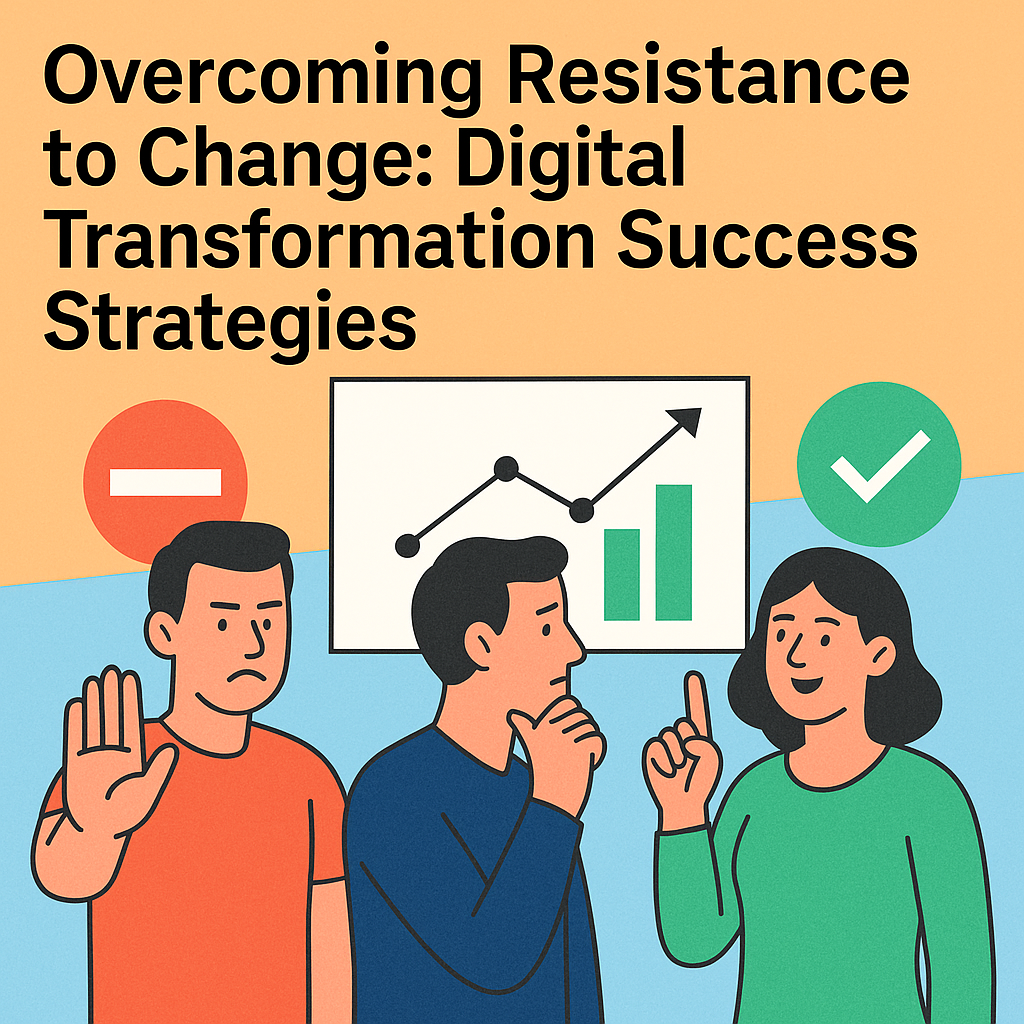Introduction
Non-profit organisations are pillars of social support, providing essential services, advocacy, and resources to communities in need. Yet, non-profits today face substantial challenges, ranging from limited financial resources and administrative constraints to evolving donor expectations and rising demands for transparency.
With such diverse demands, many find it increasingly difficult to meet their objectives using traditional methods. Through our audits and work, we've seen that digital transformation offers a path forward, enabling non profit's to amplify their impact, streamline operations, and build resilience for the future.
In this article we examine the non-profit landscape , exploring key revenue streams, operational challenges, and potential risks. We delve into the opportunities digital transformation offers, highlighting the gains that can be achieved through tools that align with people, skills and mission. Enhancing efficiency, optimising donor engagement, and fostering data-driven decision-making. Finally, we’ll examine the transformative impact of digital tools for non-profits, showing how digital maturity can unlock new possibilities.
Current Landscape: Key Revenue Streams and Associated Risks
Throughout our work we see a common theme, non-profits rely on a variety of revenue streams to sustain their missions; and each revenue source brings unique benefits but also specific risks and challenges.
Below we're going to explore these a little, shining a light on our findings.
- Individual Giving: Donations from individuals, whether one-time or recurring, are a cornerstone for many non-profits, providing a steady and flexible source of income. However, individual giving is susceptible to economic fluctuations and changing donor expectations. It requires ongoing engagement efforts, often involving personalised communications, effective donor management systems, and continuous outreach. Rising acquisition costs for new donors, often as high as £118 per supporter, highlight the financial pressure of maintaining a healthy donor base in a competitive environment.
- Legacy Donations: Many non-profits benefit significantly from legacy gifts, where supporters include the organisation in their wills. This type of income is stable and often high-value, with some organisations relying on legacy giving for as much as 42% of their total revenue. However, the administrative work for legacy gifts can be time-consuming and costly. Processing delays, complex documentation, and high administrative demands pose risks if organisations lack efficient digital systems for management.
- Grants and Institutional Funding: Grants from foundations, government bodies, and other institutions are invaluable for specific projects or core operational costs. However, these funds are often restricted to particular programs, and securing grants is highly competitive. Reporting, compliance, and data management requirements for grant funding are also complex and can drain resources if not effectively managed.
- Corporate Sponsorships and Partnerships: Corporate sponsorships and partnerships offer a way to diversify income and build long-term relationships. While these partnerships can bring in substantial support, they often require dedicated staff to manage relationships, communications, and reporting requirements. Efficient CRM tools can simplify managing these relationships, helping non-profits track interactions, follow-ups, and performance metrics.
- Event-Based Fundraising: Events, from community fundraisers to gala dinners, allow non-profits to raise money while building awareness and fostering connections. However, events are resource-intensive, with high upfront costs for planning, logistics, and marketing. Digital tools can enhance event management by tracking registrations, automating follow-up communications, and measuring the impact of each event.

Challenges and Operational Constraints
While revenue diversity is critical, non-profits also face significant operational challenges that make it difficult to capitalise on these streams effectively. Limited resources, staff constraints, and manual processes often strain their teams, impacting productivity and performance. We frequently see small teams juggling multiple roles, resulting in inefficient workflows, duplicated tasks, and operational silos across departments.
The Charity Benchmarking Report reveals that many non-profits struggle to maintain efficient fundraising operations. For example, events and community fundraising deliver lower Return on Investment (ROI) due to high expenses, while legacy donations, despite being resource-intensive, show higher returns, sometimes reaching ROI ratios as high as 111:1. What we find is that for smaller non-profits with lean resources, balancing high-impact fundraising methods with operational efficiency becomes a delicate act.
Without digital support, these constraints lead to donor attrition, increased administrative costs, and limited outcomes.
The Transformative Potential of Digital Tools in Non-Profits
Just like for private sector organisations, digital transformation is no longer just an option for non-profits; it is becoming a necessity. By embracing digital tools, we see non-profits address operational inefficiencies, improve stakeholder engagement, and make data-driven decisions that amplify impact. That success comes in some key areas;
1. Increased Efficiency and Freed Time
Our experience in digital transformation reveals that integrating digital tools can reclaim substantial amounts of time for non profits. Recent analyses show that optimising processes can free between 400 and 520 hours per individual annually, representing an average of £14,000 in freed time savings per employee. For a small organisation of 50 employees, this equates to as much as £700,000 in gains; valuable time that can be reinvested into mission-critical activities, allowing staff to focus on high-impact tasks rather than administrative work.
2. Optimisation of Routine Tasks
Routine administrative tasks often detract from more meaningful work. Our research shows that automating repetitive processes can yield an average 17% gain in efficiency, saving approximately 10 hours per employee each month. This time can then be redirected to activities that enhance donor engagement, strengthen community relationships, and drive program outcomes. For example, automated donor follow-ups and event reminders free up staff while maintaining engagement.
3. Enhanced Donor Engagement and Data-Driven Insights
Digital transformation empowers non-profits to adopt data-driven engagement strategies, allowing for personalised and effective communications with supporters. Integrated Customer Relationship Management (CRM) systems allow non-profits to track engagement metrics, analyse donor behaviours, and craft targeted messaging based on real-time data. This approach has proven to increase retention, deepen supporter relationships, and improve fundraising success.
4. Improved Cross-Departmental Collaboration
Many non-profits operate with fragmented systems, where different departments rely on disparate tools, creating information silos. Digital transformation addresses these issues by establishing a centralised platform that integrates tools for finance, communications, and program management. A cohesive digital ecosystem reduces operational silos, encourages collaboration, and provides staff with real-time access to the information they need.
5. Resilience and Adaptability
Thinking of this journey as one of increasing digital maturity allows non-profits to become more resilient and adaptable to change. Capitalising on systems aligned with skills and mission, automated workflows, and data-driven insights enable non-profits to respond quickly to challenges. The digital maturity journey helps organisations build a strong foundation for long-term success, balancing performance and resilience.

Adapting Roles for Efficiency and Growth
So what does this "freed time" mean for us? It's a reality of digital transformation that it often reveals opportunities for organisations to optimise their workforce, adjusting roles to reflect new efficiencies. Through our mapping process, we work with non-profits to identify areas where digital tools will reduce the need for certain repetitive or manual tasks, and in doing so the resource required to complete those tasks. By quantifying these changes, we provide a clear picture of how roles and responsibilities might evolve as part of an optimised, digitally mature organisation.
Our goal is to give non-profits the insights they need to make informed decisions. While this may mean identifying roles that are no longer essential in their current form, it is always important to highlight these changes, so that leadership can decide how best to capitalise on the efficiencies. In many cases, streamlined operations mean that staff can be reallocated to more strategic, mission-focused work, enhancing their impact and helping them achieve greater satisfaction in their roles.
For non-profits looking to reduce operational costs, the potential for redeploying or adjusting roles can be transformative in of itself.
We support organisations throughout this process, offering strategic guidance to help them align their workforce with their long-term vision and goals. At Yopla, we understand the sensitivities involved in such decisions, and our approach is always respectful, practical, and centred on achieving each non-profit’s mission in the most sustainable way possible.
Realising the Long-Term Gains of Digital Maturity
Driving up digital maturity offers profound benefits for all organisations, from operational efficiency and enhanced engagement to reduced risks and long-term financial sustainability. These gains fall into 4 primary areas;
- Operational Efficiency: Digital tools streamlining workflows, reducing manual tasks, and promoting data consistency, resulting in cost savings that can be reinvested into mission-driven initiatives.
- Data-Driven Decision-Making: Access to real-time data allows non-profits to make evidence based decisions, evaluate program performance, and adapt strategies to better serve their communities.
- Improved Stakeholder Engagement: Digital platforms enable non-profits to build stronger relationships with donors, volunteers, and beneficiaries, personalising interactions and enhancing loyalty.
- Risk Reduction and Resilience: Centralised and automated systems reduce reliance on manual processes and key individuals, enhancing resilience and providing the agility needed to navigate a complex landscape.
The Role of Digital Transformation Partners in Supporting Non-Profits
For those non-profits ready to embark upon a digital transformation journey, working with a dedicated partner will help them navigate the complexities and reach an end state with tangible benefits.
Yopla is proud to support a variety of charities across the UK, offering tailored digital solutions and non-profit rates, and to see end states that will ensure those organisations success well in to the future.
Our process for non profits is the same as it is for any organisation, delivering the same quality and consistency throughout. We start with our Digital Maturity Audit, helping organisations assess their current digital landscape, identifying areas for improvement and creating a roadmap for achieving their goals.
Our Digital Mapping service surfaces resource efficiency, workflows and process maps while aligning digital tools with each organisation’s mission and strategy, ensuring a cohesive and efficient digital environment. Then our Forecasting work provides deep insights in to skills, culture and alignment; highlighting those best placed to champion the change and ready the organisation for a digitally enabled future.
Conclusion
The journey toward digital maturity provides an opportunity to reimagine roles, adapt to new efficiencies, and potentially reduce operational costs. While these changes can feel daunting, they ultimately allow non-profits to grow sustainably, placing their teams in roles that align with high-impact work.
With thoughtful planning and support, non-profits can make these transitions in ways that strengthen their organisations and the communities they serve.
We believe that digital transformation holds the key to helping non-profits overcome many of the challenges they face today, from limited resources to evolving demands. By embracing digital tools, our non-profit clients streamline their operations, freeing up valuable time and allowing staff to focus more on what matters most: the mission. Through automation and data-driven insights, they gain the ability to engage donors more successfully, make informed decisions, and build resilience for the future.
At Yopla, we are proud to work with charities across the UK, helping them harness digital transformation to drive their missions forward. It's more than a technological upgrade, it’s a path to sustainability, resilience, and lasting positive impact. For non-profit leaders, choosing to embark on this journey means creating a future where resources go further, donor relationships are strengthened, and the organisation is better equipped to adapt and thrive.
We look forward to supporting you in making that future a reality.








